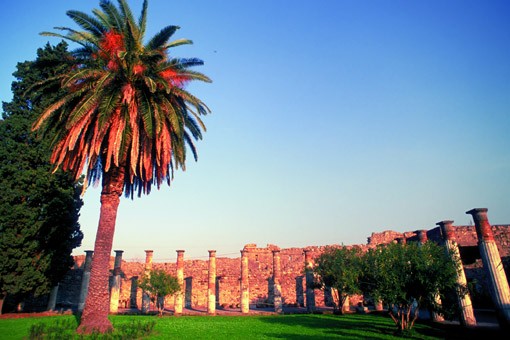 Experience history first hand on a Pompeii holiday and imagine how life was lived 2,000 years ago. Pompeii is Italy’s No 1 archaeological site, so book a Pompeii hotel and marvel at a city frozen in time.
Experience history first hand on a Pompeii holiday and imagine how life was lived 2,000 years ago. Pompeii is Italy’s No 1 archaeological site, so book a Pompeii hotel and marvel at a city frozen in time.Life in Pompeii changed forever on 24 August 79 AD, when Vesuvius erupted and covered the city in molten lava and ash. Feel the centuries slip away on your Pompeii break as you walk along cobbled streets, past shops daubed with ancient graffiti. Gruesome plaster casts capture the agony of Pompeii’s last moments. Hiring a guide will help you find your way to the magical House of the Mysteries, a luxury villa decorated with Dionysian frescoes.
Pompeii holidays make history fun. Kids are captivated by delightful details like the fairy-tale dancing sculpture at the House of the Faun and the ‘Beware of the Dog’ mosaic in Latin. There’s plenty of room to run and play on the Triangular Forum’s grassy field, and you can clearly see Vesuvius brooding in the distance.
To dine at Pompeii hotels and restaurants, head to the modern town of Pompei. Indulge in seafood pasta and recipes from ancient Rome at Il Principe, whose elegant décor recalls the luxury of a Pompeii villa. Roman statues dot the dining terrace at Lucullus, which has a generous antipasto buffet. Closer to the Pompeii archaeological site, Zi Caterina serves well-priced, traditional Neapolitan pizzas.
When: November-March 8.30am-5pm, April-October 8.30am-7.30pm Where: Porta Marina entrance
Tickets: adults €11, EU children and pensioners free
Tips: Allow at least four hours to tour the ruins, wear comfortable walking shoes and a hat, and take sunscreen, bottled water and a picnic.
The most important frescoes and mosaics unearthed at Pompeii are on display in Naples’ Archaeological Museum.